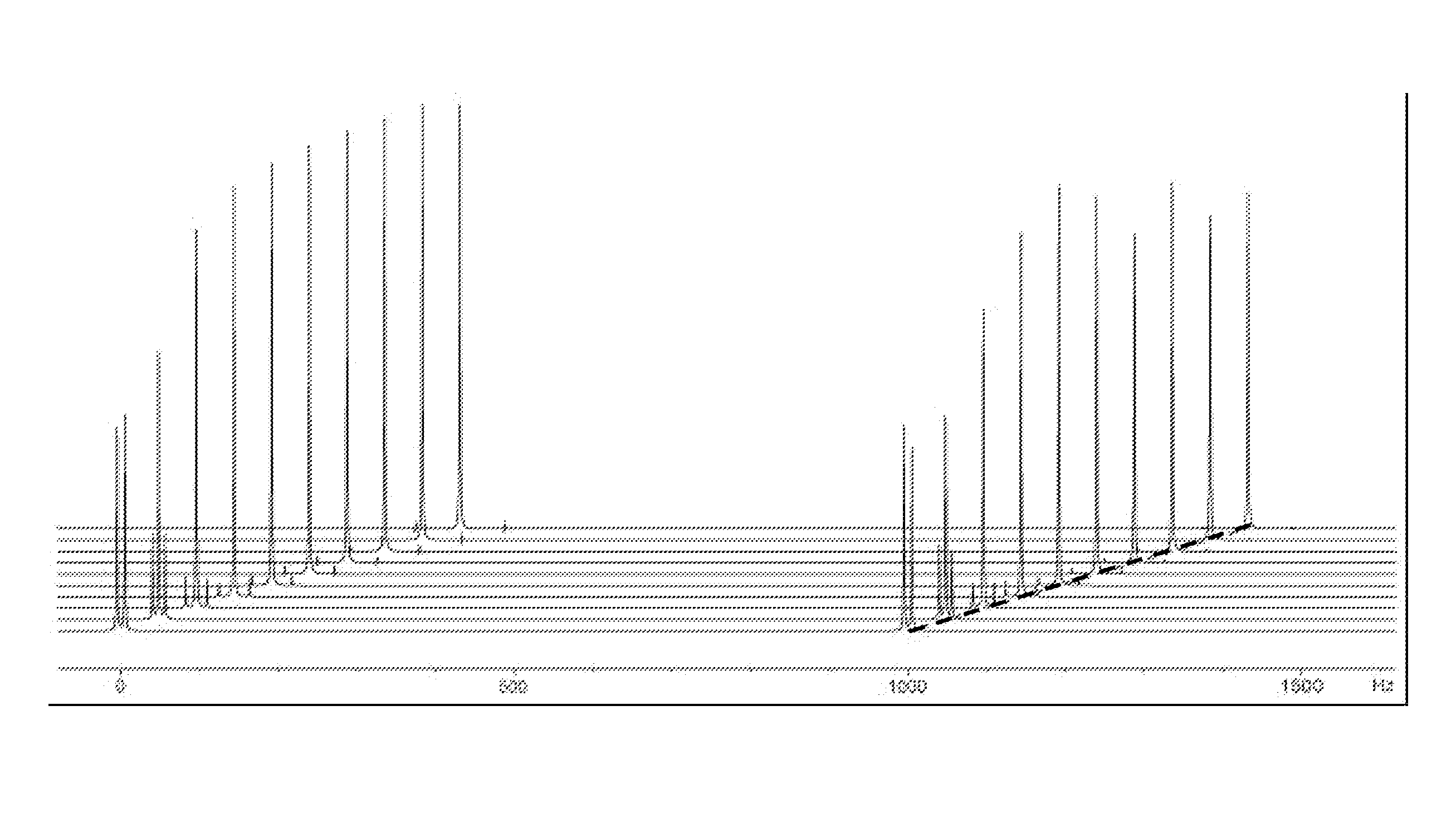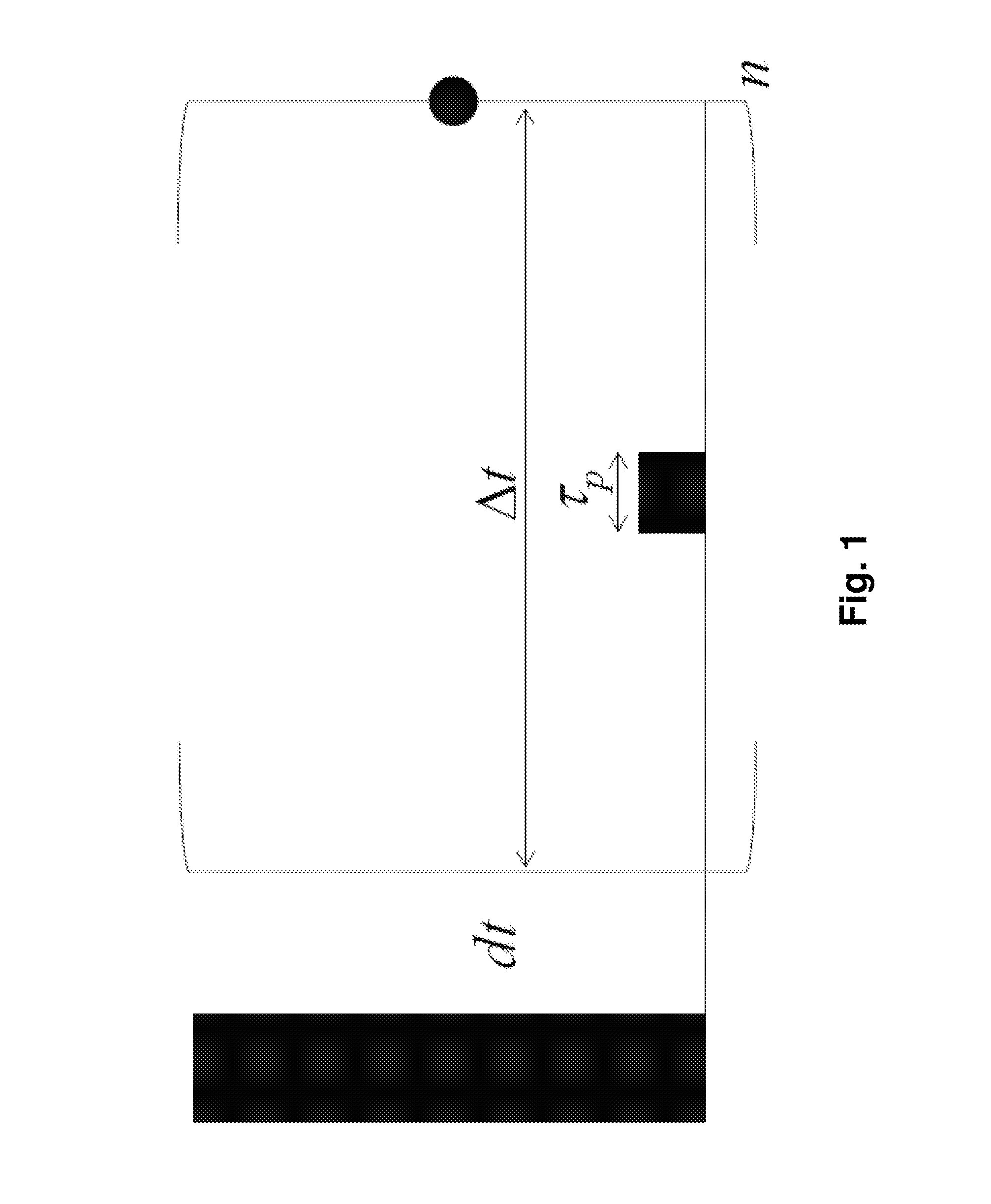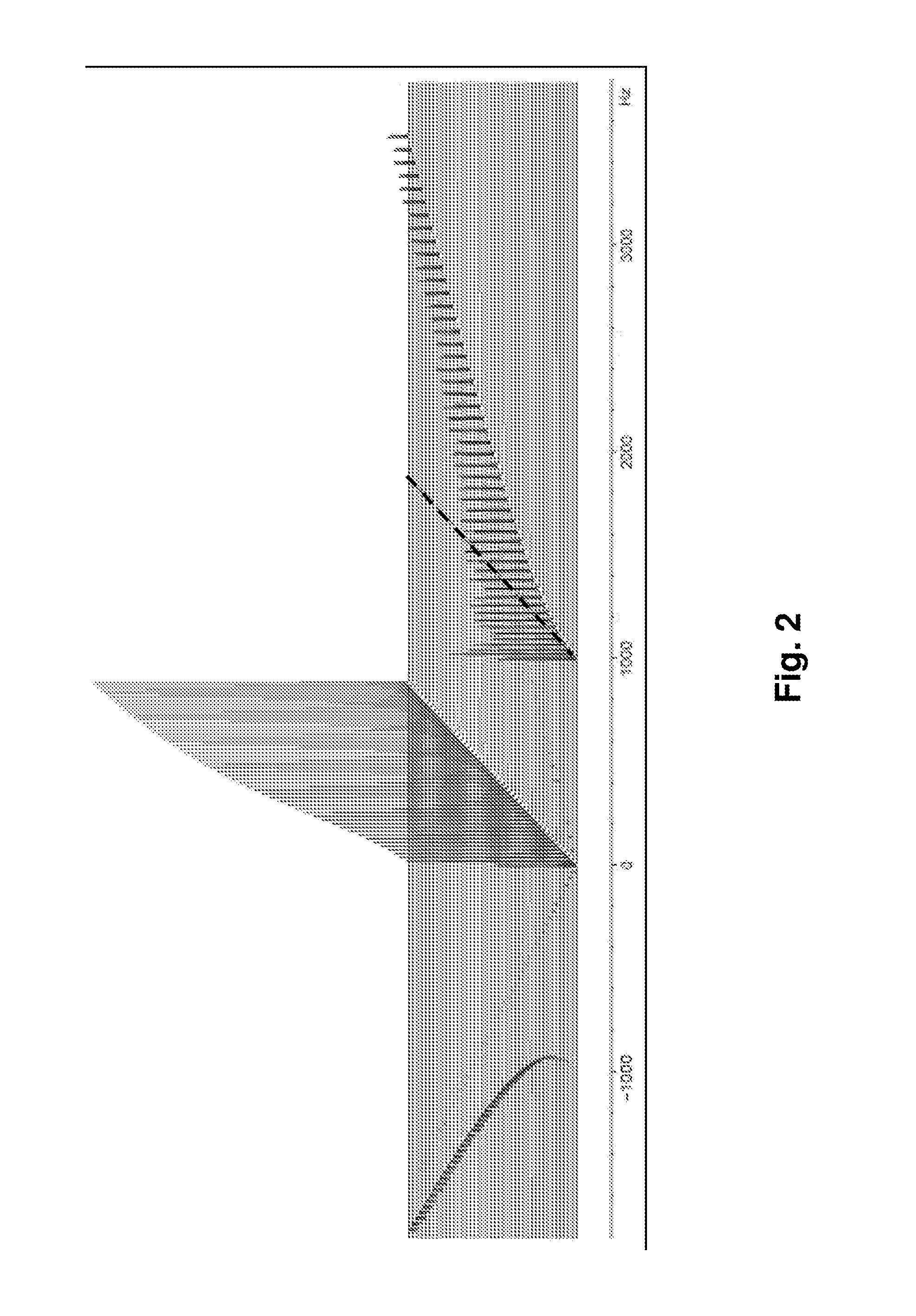Fourier tickling for homonuclear decoupling in NMR
a technology of nmr and nmr decoupling, applied in the field of high-resolution nmr (= nuclear magnetic resonance) measurements, can solve the problems of difficult extension to multiple frequencies, no such methods appear to have found widespread applications, and usually only achieve decoupling effects
- Summary
- Abstract
- Description
- Claims
- Application Information
AI Technical Summary
Benefits of technology
Problems solved by technology
Method used
Image
Examples
Embodiment Construction
[0028]FIG. 1 shows a scheme for Fourier tickling experiments. The tall rectangle represents the initial excitation pulse whereas the small rectangle represents a tickling pulse of duration τp applied along the x axis. The black dot represents the acquisition of a single data point. If the receiver runs continuously, this data point is obtained by averaging over all data points acquired in the interval during which the receiver is activated. The Driven Induction Decay (DID) is built up by acquiring n data points through an n-fold repetition of the loop.
[0029]Decoupling of homonuclear scalar interactions JAX in coupled spin systems can be achieved by applying brief but fairly intense radio-frequency (rf) “tickling” pulses (typically with a duration τp=1 μs and an rf amplitude 21 / (2π)ω1=ω1τp / Δt should approximately satisfy the condition ω1=πJ. If one “tickles” spin A by placing the carrier frequency of on the chemical shift ΩA, the fine-structure due to JAX collapses in both A and X mu...
PUM
 Login to View More
Login to View More Abstract
Description
Claims
Application Information
 Login to View More
Login to View More - R&D
- Intellectual Property
- Life Sciences
- Materials
- Tech Scout
- Unparalleled Data Quality
- Higher Quality Content
- 60% Fewer Hallucinations
Browse by: Latest US Patents, China's latest patents, Technical Efficacy Thesaurus, Application Domain, Technology Topic, Popular Technical Reports.
© 2025 PatSnap. All rights reserved.Legal|Privacy policy|Modern Slavery Act Transparency Statement|Sitemap|About US| Contact US: help@patsnap.com



